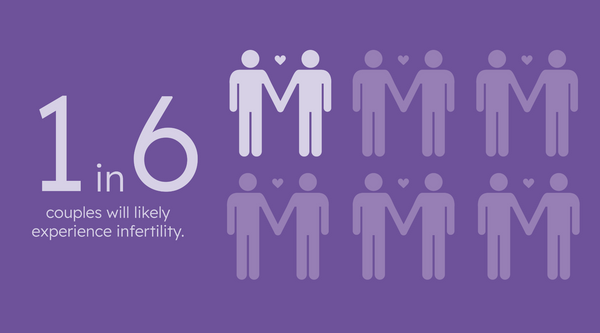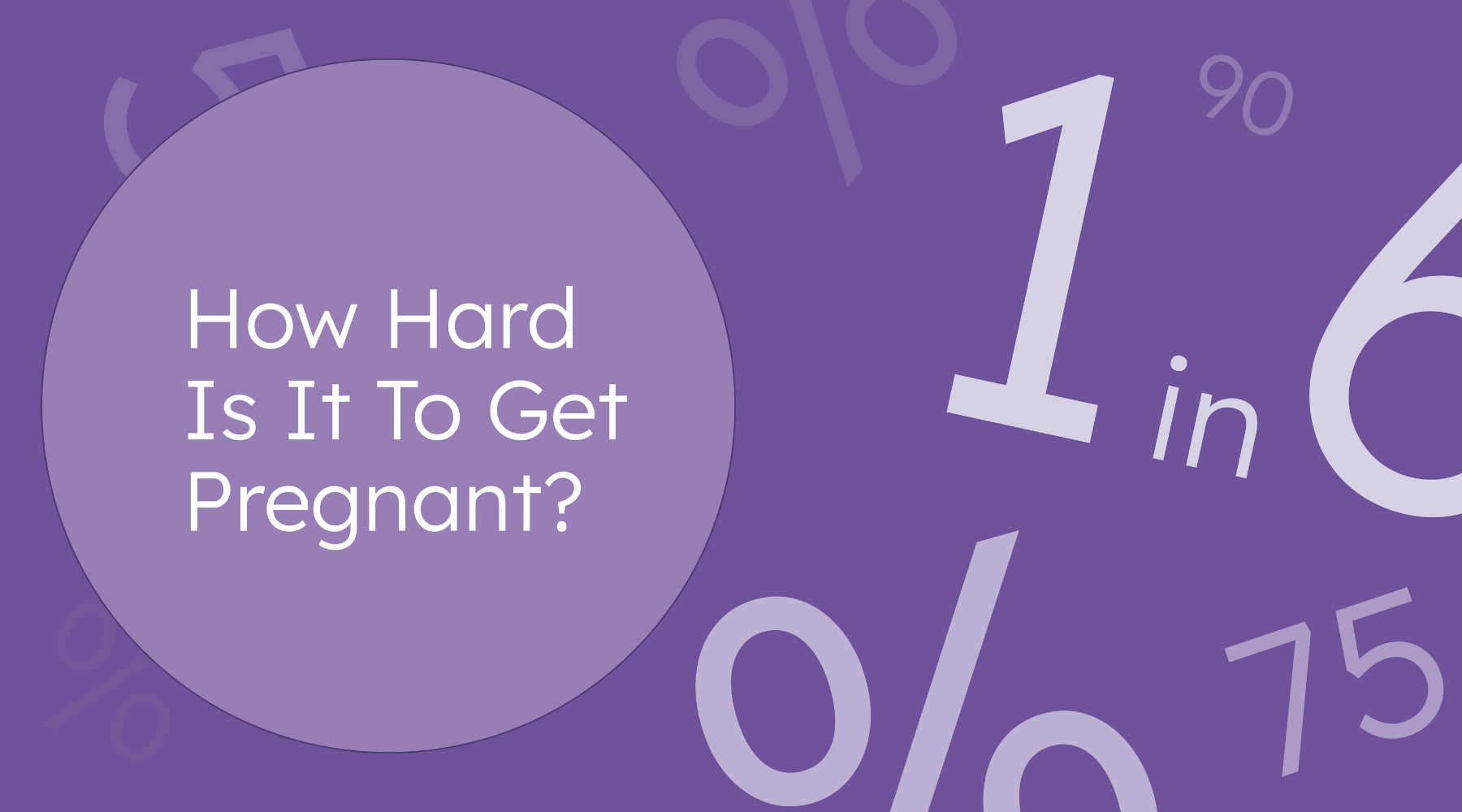If your sex education experience was anything like ours, there may have been a period in your life when you believed you could get pregnant at any moment. And, like us, you may have been surprised to find that’s not true once you actually started trying to conceive!
While some couples have no trouble conceiving, for many others getting can be a long, emotional road. We know firsthand how difficult the journey can be, which is why our goal is to empower you with valuable information sooner so you can make more informed decisions to reach your fertility goals faster.
Keep reading to learn exactly how hard it is to get pregnant and what you can do now to set yourself up for success later.
So, how hard is it to get pregnant?
As we mentioned, how difficult it is to conceive varies drastically from couple to couple. In general, about one in six couples will experience infertility.

Studies show that most couples have a 75% chance of conceiving within the first 6 months of trying. From there, they have a 90% chance of conceiving within the first year of trying and a 95% chance of conceiving within two years.
While these odds look pretty good, getting pregnant can be a little more complicated than sperm meeting egg.
4 Factors that May Affect Your Ability to Conceive
1. Timing Intercourse or Insemination
Contrary to popular belief, you can only get pregnant during a select few days of your cycle — your fertile window. This window of time includes about 4 days leading up to and the day of ovulation.
While an egg can only survive for 12-24 hours after ovulation, sperm can live in the female reproductive tract for up to 5 days. According to recent studies, having intercourse or inseminating before ovulation, during your fertile window, can improve your chances at successful pregnancy.
In fact, according to a different study, incorrect timing may be a key reason as to why some couples have a harder time getting pregnant. In this study, only 55% of women estimated their ovulation day was within their fertile window.
Correctly identifying your fertile window significantly increases your chances of getting pregnant. While you can use ovulation tests (or LH tests) to help identify your 2 most fertile days, tracking an estrogen marker with Proov Complete can provide up to 6 fertile days.
That means more time to "try" and better chances of conception!

2. Successful Ovulation
After you identify your fertile window and time intercourse or insemination around ovulation, you should then confirm you’re ovulating successfully.
"Successful" ovulation refers to an ovulatory event in which ovulation occurs and progesterone levels remain adequately elevated throughout the entire implantation window to allow for the best possible chance at conception.
Ovulatory disorders are the primary cause of female infertility, and can include a lack of ovulation or a lack of sufficient progesterone production after ovulation.
You see, progesterone’s job during the second half of your cycle (the luteal phase) is to prepare the uterine lining for implantation by making it “sticky” enough to allow a fertilized embryo to implant. Without enough progesterone it can be more difficult for successful implantation and pregnancy to occur.
You can check for successful ovulation with Proov Confirm PdG tests or Proov Complete and our patented PdG testing protocol. If your test results show you may not be ovulating successfully, the good news is that the fix is often simple!
3. Sperm Quality
Don’t think we forgot about him! Studies show that one-third of all infertility issues are caused by male reproductive issues, one-third female, and one-third a combination of both. Checking his swimmers early on can help you get set up for success from the start.
There are two important pieces to sperm quality: count and motility. Count refers to how much sperm are present in a milliliter of semen and motility refers to how well the sperm can get to where they need to go (i.e. the egg!).
In terms of goals to strive for, the Mayo Clinic says your partner is most likely to be fertile if he has at least 15 million sperm per milliliter of semen and at least 40% of his sperm is moving.
You can test your partner’s sperm using an at-home sperm test, but be sure to double check that it tests for count and motility, as many tests only measure one or the other. Luckily, the Proov Sperm Test is FDA cleared to measure both count and motility.
4. Age
Lastly, a major factor to consider in your ability to conceive is your age. Now, we know many people believe that it’s impossible to conceive once you’re over 35 — this isn’t necessarily true.
While your chances at pregnancy decrease from 25% to 10% per cycle once you turn 40, this doesn’t mean pregnancy is impossible. We’ve seen many women over 35 conceive and carry a healthy baby to term!
As we age, your ovarian reserve (the amount of eggs left in your ovaries) and your egg quality (the health of your egg) both decline over time. This means you have less eggs left to recruit for ovulation and more of these eggs are genetically abnormal, meaning they cannot successfully implant and sustain a pregnancy.
According to the American College of Obstetrics and Gynecology, ovarian reserve and egg quality begins to decline at age 32 and more rapidly at age 37. This makes it all the more important to explore at home testing options (like the ones we previously mentioned!) to identify any potential issues sooner, rather than later.
Luckily, Proov Complete also measures FSH (follicle stimulating hormone) to provide insight into your ovarian reserve.
Looking for the most comprehensive fertility tests all in one? Try the Hers & His Fertility Starter kit, so you can get information to move you forward faster!















